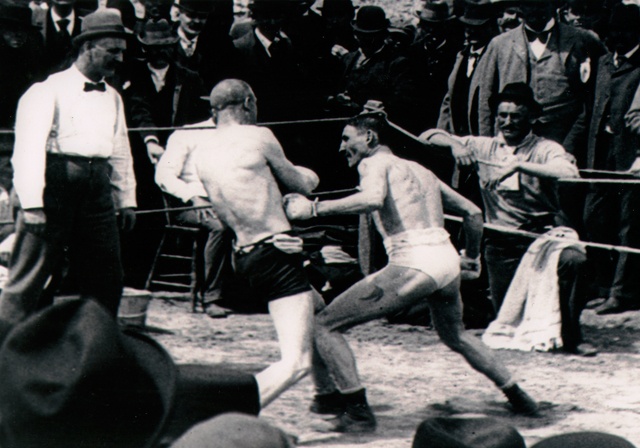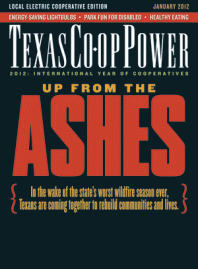What if the NFL held a Super Bowl, but no one knew until shortly before kickoff where the game was to be played? That was sort of the situation in 1896 when Peter Maher and Bob Fitzsimmons agreed to fight for the world heavyweight boxing championship. Oddly, almost no one—including the fighters, fans and the Texas Rangers—knew where this fight was going to take place until right up to the last minute.
Actually, the Super Bowl analogy only goes so far because America in the late 19th century had reached a point of anguish over society’s violent and lascivious elements, and boxing was at the forefront of social critics’ agenda, right along with women riding bicycles and the evils of Demon Rum. Most states had outlawed prizefighting. Texas was one of the few exceptions. If the fight was going to take place at all, it would most likely take place in Texas, but where?
The event itself had roots in an earlier fight between Maher and Fitzsimmons in 1892. Fitzsimmons won that contest and set his sights on a championship bout with Gentleman Jim Corbett, who seemed more interested in being a celebrity than defending his heavyweight championship. Corbett put Fitzsimmons off for a while, but then relented.
The trouble began when promoter Dan Stuart announced that the fight would take place in Dallas. Gov. Charles Culberson responded to the news by calling a special session of the Legislature that made it illegal to swap punches for money anywhere in the state. While Stuart tried in vain to schedule the fight in Arkansas, Corbett vacated the title in favor of the winner of a fight between Maher and Steve O’Donnell in Carson City, Nevada. Maher won that fight, but Stuart still had to find a place to stage the title bout.
A group of businessmen in El Paso, who either didn’t know or didn’t care about the new law against prizefighting, offered Stuart a bonus of $6,000 if he would stage the fight in their town. Stuart obliged, and El Paso, all abuzz over the prospect, soon welcomed not only the combatants but also a host of prizefight fans and hangers-on.
“Nothing short of lightning or the destruction of the earth by fire or flood can stop the contest we have arranged to pull off,” Stuart declared. To embolden his claim, he announced that a weeklong “Fistic Carnival” featuring prizefights would be held in the wake of the championship bout. Texas Rangers from Ysleta showed up to monitor the situation. A group calling itself the Ministers’ Union of El Paso took its criticisms of prizefighting as inherent brutality all the way to the U.S. Congress, which quickly enacted a federal law against any “pugilistic encounter between man and man or fight between man and bull or any other animal for money or for other things of value, or for any championship” in any of the territories of the United States.
While the drama played itself out in El Paso, Judge Roy Bean, the fabled Law West of the Pecos, kept up with the proceedings from Langtry, where he minded his Jersey Lilly saloon and dispensed his own peculiar brand of justice. As the scheduled date of the bout grew nigh without any firm indication of where it would be held, Bean sent a telegram to Stuart that offered his town as a site if he so desired. Stuart so desired.
When a Southern Pacific train pulled into Langtry with its cargo of sportswriters, fight fans and gamblers on February 21, 1896, Bean was calmly taking in the scene from the front porch of the Jersey Lilly. He had constructed a ring on a sandbar at the bottom of Rio Grande Canyon, just across the river in the state of Coahuila, Mexico, beyond the jurisdiction of the Texas Rangers and politicians. Legendary but aging old West lawman and gambler Bat Masterson was there to serve as master of ceremonies and keep an eye on things, but the bout was over in the blink of an eye. It ended when Fitzsimmons knocked Maher unconscious. Maher said later, “I thought I had him licked until he punched me under the jaw and then it was all over with me and I quit thinking.”
The fight was four years in the making but lasted less than two minutes. When it was over, the clear winner was Judge Roy Bean, for whom the fight turned out to be a real financial pleasure and a springboard to national fame.
——————–
Clay Coppedge, frequent contributor
A version of this story appeared in Coppedge’s book, Forgotten Tales of Texas (The History Press, 2011).


